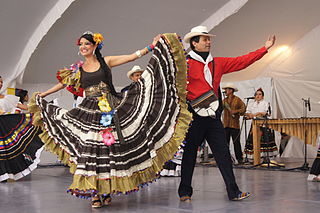 W
WMany aspects of Colombian culture can be traced back to the early culture of Spain of the 16th century and its collision with Colombia's native civilizations. The Spanish brought Catholicism, the feudal encomienda system, and a caste system that favored European-born whites. After independence from Spain, the criollos struggled to establish a pluralistic political system, between conservative and liberal ideals. The conservatives supported the involvement of the Catholic Church in the state, while liberals favored the separation of these. The conservatives managed to outsource public education to the Catholic Church, and for many years, the church controlled the country's education system. Both parties engaged in multiple civil wars resulting in a slow development of the country and the isolation of regions until the end of the 19th century. Ethno-racial groups maintained their ancestral heritage culture: whites tried to keep themselves, despite the growing number of illegitimate children of mixed African or indigenous ancestry. These people were labeled with any number of descriptive names, derived from the casta system, such as mestizo, mulatto and moreno. Blacks and indigenous people of Colombia also mixed to form zambos, creating a new ethno-racial group in society. This mix also created a fusion of cultures. Carnivals for example became an opportunity for all classes and colors to congregate without prejudice. The introduction of the bill of rights of men and the abolishment of slavery (1851) eased the segregationist tensions between the races, but the dominance of the whites prevailed and prevails to some extent to this day.
 W
WThe Anthem of Bogotá is the musical composition that symbolizes the Colombia's capital city. It was officially adopted through the decree 1000 of July 31, 1974.
 W
WThe mochila arhuaca, or tutu iku in Ika, is a popular Colombian artisan bag made by the Arhuaco people of the Sierra Nevada. In recent years, the bags have turned into a cultural symbol for Colombian identity.
 W
WA muleteer, or more informally a muleskinner is a person who transports goods using pack animals, especially mules. In South America, muleskinners transport coffee, maize (corn), cork, wheat, and a myriad of other items. They used to be common in the Paisa Region of Colombia but were replaced in the 1950's by tractor trailers called locally "tractomulas" paying homage to the mules that used to do this hard job. In California, muleteers work out of pack stations. In Europe, there are still muleteers in the south of Portugal and the southwest of Spain, in the cork producing area. Their role is now limited to transporting the cork with their mules, out of the Mediterranean oak forest to more accessible routes, where modern means of transport are available.
 W
WThe Biblioburro is a traveling library that distributes books to patrons from the backs of two donkeys, Alfa and Beto. The program was created in La Gloria, Colombia, by Luis Soriano. The biblioburro operates within the central municipalities of the Department of Magdalena, on Colombia's Caribbean shore.
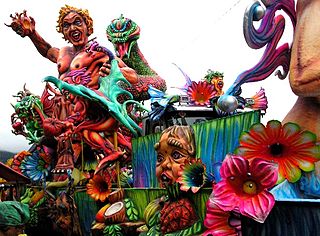 W
WBlacks and Whites' Carnival, is the largest carnival celebration in south Colombia, its geographical indication belongs to the city of Pasto. It is celebrated from January 2nd to the 7th of each year and attracts a considerable number of Colombian and foreign tourists.
 W
WCalentao', sometimes spelled calenta'o is a Paisa and Antioquia, Colombian cuisine dish made from reheated leftovers including rice, egg, pasta, beans, potatoes and other foods such as arepa, chorizo, and ground beef. It is generally eaten for breakfast and is often accompanied by aguapanela, arepa, coffee, juice or hot chocolate. Depending on the region it can also be served with hogao. It is sometimes referred to as Fríjoles Trasnochaos. A fried egg is usually served on top of the dish and it is called Calentao' "A Caballo". It is usually eaten for breakfast using some of the night before's leftovers.
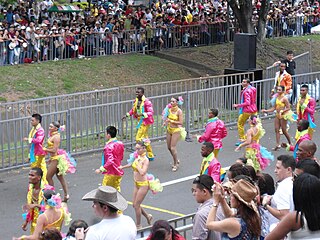 W
WThe Cali's Fair is the most important cultural event in Cali, Colombia. It is a celebration of the region's cultural identity, famous for the Salsa marathon, horse riding parades and dance parties.
 W
WCeroxylon quindiuense, often called Quindío wax palm, is a palm native to the humid montane forests of the Andes in Colombia and northern Peru.
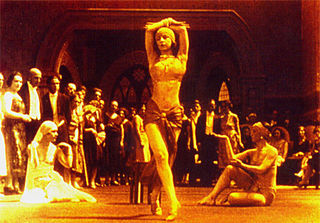 W
WCinema of Colombia refers to the film industry based in Colombia. Colombian cinema began in 1897 and has included silent films, animated films and internationally acclaimed films. Government support included an effort in the 1970s to develop the state-owned Cinematographic Development Company which helped produce some films yet struggled to maintain itself financially viable. FOCINE became defunct in 1993. In 1997 the Colombian congress approved Law 397 of Article 46 or the General Law of Culture with the purpose of supporting the development of the Colombian film industry by creating a film promotion mixed fund called Corporación PROIMAGENES en Movimiento. In 2003 Congress also approved the Law of Cinema which helped to restart the cinematographic industry in Colombia.
 W
WColombian Spanish is a grouping of the varieties of Spanish spoken in Colombia. The term is of more geographical than linguistic relevance, since the dialects spoken in the various regions of Colombia are quite diverse. The speech of coastal areas tends to exhibit phonology typical of Caribbean Spanish, while highland varieties do not. The Caro and Cuervo Institute in Bogotá is the main institution in Colombia to promote the scholarly study of the language and literature of both Colombia and the rest of Spanish America. The educated speech of Bogotá, a generally conservative variety of Spanish, has high popular prestige among Spanish-speakers throughout the Americas.
 W
WLittle Candles Day is a widely observed traditional holiday in Colombia. It is celebrated on December 7 on the eve of the Immaculate Conception, which is a public holiday in Colombia. This day is the unofficial start of the Christmas season in the country.
 W
WFique is a natural fibre that grows in the leaves of plants in the genus Furcraea. Common names include fique, cabuya, pita, penca, penco, maguey, cabui, chuchao and coquiza.
 W
WThe Guayupe are an Arawak-speaking indigenous group of people in modern-day Colombia. They inhabit the westernmost parts of the department of Meta. At the time of the Spanish conquest, more than 250,000 Guayupe were living in large parts of Meta.
 W
WA llanero is a South American herder. The name is taken from the Llanos grasslands occupying western-central Venezuela and eastern Colombia.
 W
WThe Llanero Spanish is the set of linguistic modalities of the Spanish language spoken in the Venezuelan-Colombian Llanos region. It is characterized by the mixing of elements from Old Spanish with indigenous elements.
 W
WThe Muisca are an indigenous people and culture of the Altiplano Cundiboyacense, Colombia, that formed the Muisca Confederation before the Spanish conquest. The people spoke Muysccubun, a language of the Chibchan language family, also called Muysca and Mosca. As one out of many advanced civilizations of the Americas ,just to name a few, they were encountered by conquistadors ordered by the Spanish Empire in 1537 at the time of the conquest. Subgroupings of the Muisca were mostly identified by their allegiances to three great rulers: the zaque, centered in Hunza, ruling a territory roughly covering modern southern and northeastern Boyacá and southern Santander; the zipa, centered in Bacatá and encompassing most of modern Cundinamarca, the western Llanos; and the iraca, religious ruler of Suamox and modern northeastern Boyacá and southwestern Santander.
 W
WThe Muisca raft, sometimes referred to as the El Dorado Raft, is an artistic figure of pre-Columbian gold votive, drafted by the Muisca who established one of the four grand civilisations in the Americas on the Altiplano Cundiboyacense in the Eastern Ranges of the Colombian Andes. The piece is exhibited at the Gold Museum in Bogota. It is estimated that the figure was drawn between 600 and 1600 AD by lost-wax casting in gold with a small amount of copper.
 W
WThe Muzo people were a Cariban-speaking indigenous group who inhabited the western slopes of the eastern Colombian Andes. They were a highly war-like tribe who frequently clashed with their neighbouring indigenous groups, especially the Muisca. It is said they performed cannibalism on their conquered neighbours.
 W
WThe National Monuments of Colombia are the set of properties, nature reserves, archaeological sites, historic districts, urban areas and property that, for values of authenticity, originality, aesthetics, and artistic techniques, are representative of Colombia and constitute core elements of its history and culture. The cultural heritage of Colombia includes material and immaterial assets "which are an expression of the Colombian nationality", in accordance with Law No. 1185 (2008). As of December 2011, 1079 National Monuments have been declared. A further sixteen candidate sites have been identified for future declaration.
 W
WA Paisa is someone from a region in the northwest of Colombia, including the part of the Andes in Colombia. The Paisa region is formed by the departments of Antioquia, Caldas, Risaralda and Quindío. Some regions of Valle del Cauca Department (north) and Tolima Department (west) culturally identify as paisas. The main cities of the Paisa region are Medellín, Pereira, Manizales and Armenia.
 W
WThe Panche or Tolima is an indigenous group of people in what is now Colombia. Their language is unclassified – and possibly unclassifiable – but may have been Cariban. They inhabited the southwestern parts of the department of Cundinamarca and the northeastern areas of the department of Tolima, close to the Magdalena River. At the time of the Spanish conquest, more than 30,000 Panche were living in what would become the New Kingdom of Granada. Early knowledge about the Panche has been compiled by scholar Pedro Simón. According to the latter, the word panche in their own Panche language means "cruel" and "murderer".
 W
WParqués is the Colombian version of a board game in the cross and circle family. The game is described as a "random thinking" game: the moves depend on the roll of the dice but players must consider possible strategies before executing their move. The objective of the game is to advance all the pieces to the end.Once in the safety zone player can use 2 dies until they are one space away from home, where they will then just use one die.
 W
WPoporo is a device used by indigenous cultures in present and pre-Colombian South America for storage of small amounts of lime produced from burnt and crushed sea-shells. It consists of two pieces: the receptacle, and the lid which includes a pin that is used to carry the lime to the mouth while chewing coca leaves. Since the chewing of coca is sacred for the indigenous people, the poporos are also attributed with mystical powers and social status.
 W
WThe Quimbaya civilization (/kɪmbaɪa/) was a Pre-Columbian culture of Colombia, noted for their gold work characterized by technical accuracy and detailed designs. The majority of the gold work is made in tumbaga alloy, with 30% copper, which imparts meaningful color tonalities to the pieces.
 W
WThe San Agustín culture is one of the ancient Pre-Columbian cultures of Colombia. Its beginnings go back at least to the fourth millennium B.C. Several hundred large monolithic sculptures have been found here.
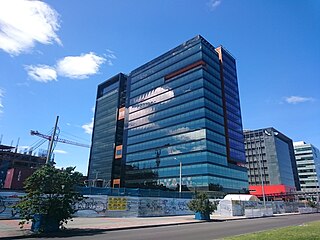 W
WScience and technology in Colombia refers to the development of scientific research and technological innovation in Colombia, and how these in turn affect Colombian society, politics, and culture. Colciencias is a government agency that supports fundamental and applied research in Colombia.
 W
WThe Sutagao are the Chibcha-speaking indigenous people from the region of Fusagasugá, Bogotá savanna, Cundinamarca, Colombia. Knowledge about the Sutagao has been provided by scholar Lucas Fernández de Piedrahita.
 W
WThe Tegua or Tecua were an Arawak-speaking indigenous people of Colombia who died out in the 19th century.
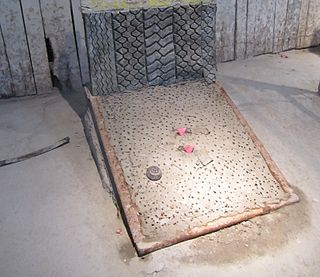 W
WTejo, also known, to a lesser degree, as turmequé, is a traditional throwing sport in Colombia. It is characteristic for its use of small targets containing gunpowder, which explode on impact.
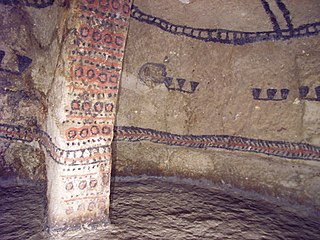 W
WTierradentro is one of the ancient Pre-Columbian cultures of Colombia. It started to flourish around 200 BC, and continued into the 17th century.
 W
WJuan Valdez is a fictional character who has appeared in advertisements for the National Federation of Coffee Growers of Colombia since 1958, representing a Colombian coffee farmer. The advertisements were designed by the Doyle Dane Bernbach ad agency, with the goal of distinguishing 100%-Colombian coffee from coffee blended with beans from other countries. He typically appears with his mule Conchita, carrying sacks of harvested coffee beans. He has become an icon for Colombia as well as coffee in general, and Juan Valdez's iconic appearance is frequently mimicked or parodied in television and other media.
 W
WThe Yipao or Jeep parade is folkloric celebration in the Colombian department of Quindío, specially during the anniversary parties of the departmental capital Armenia.